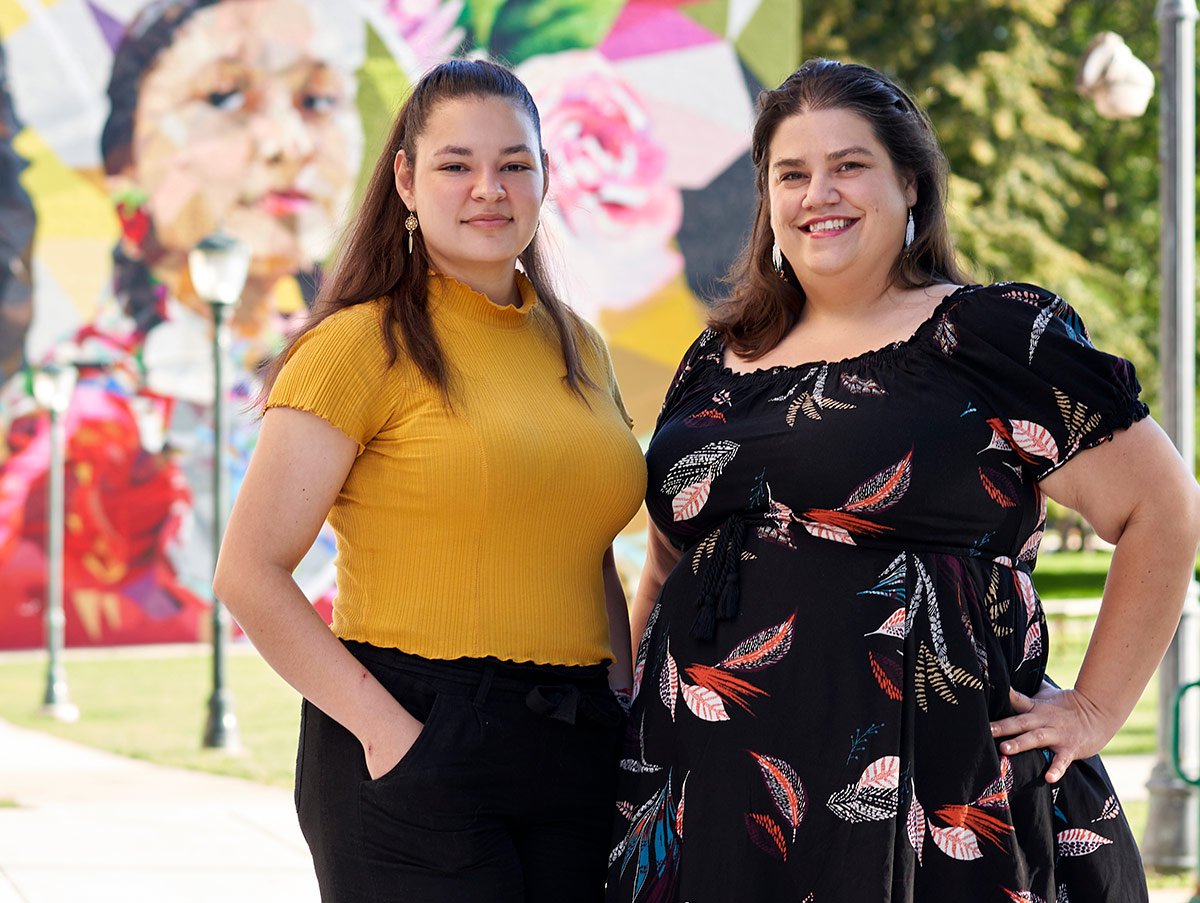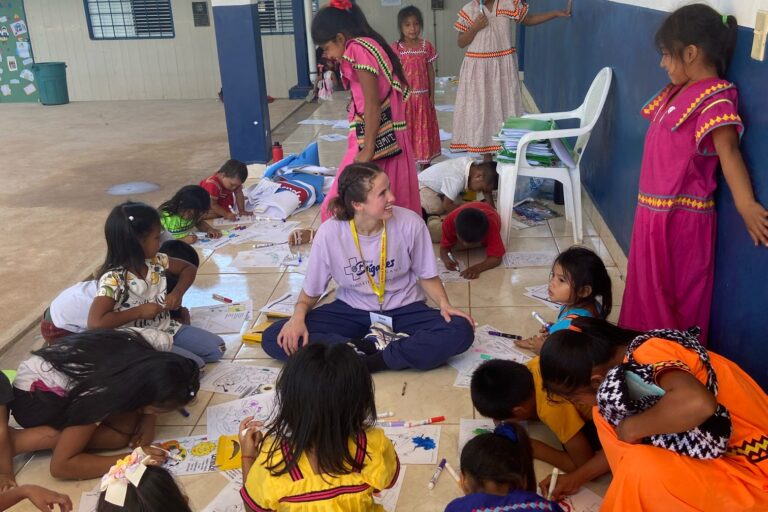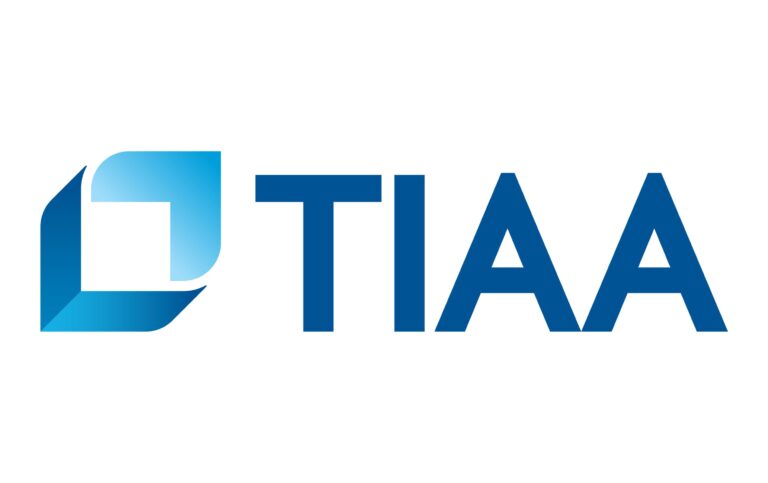This story first appeared on Humanities Without Walls.
Dr. Samantha Majhor is an assistant professor of English in the Klingler College of Arts and Sciences. Majhor is of Yankton Dakota and Assiniboine descent, and in her role as faculty advisor for Marquette’s Indigeneity Lab, she works alongside undergraduate students in collaboration with Native and non-Native faculty on interdisciplinary research projects in the sciences and humanities, with a focus on Indigenous topics. During her Ph.D. program at the University of Minnesota, Majhor was part of the HWW Grand Research Challenge project team for “Indigenous Art and Activism Along the Mississippi River in Changing Climates.”
Describe your involvement with the Grand Research Challenge project “Indigenous Art and Activism Along the Mississippi River in Changing Climates.” How did this project impact your dissertation research?
My participation in the project began when I was a graduate student at the University of Minnesota and culminated with my participation as an assistant professor at Marquette University, so the project bridges an important and transitionary moment in my life as a scholar. During the first two years of the project, I was finishing my dissertation work on Native Materialisms in contemporary Native American literature. Meeting Indigenous artists and activists whose work focused on Native relationships to the Mississippi River and its tributaries further informed my thinking on the deep human and non-human relationships that our literary texts so often express. Many of the artists we consulted are responding to climate change threats to the environment by remembering long-held human and other-than-human relationships — those connections between agriculture, basketry, pottery, mound-building — and bringing those longstanding relationships into the contemporary moment in strategic ways. Their work illustrates what’s at stake in the disruption of these relationships, and they also point toward strategies of continuance through and beyond settler-colonialism and climate disaster.
Beyond the ways the project spoke to the subject matter of my research, I believe it was even more instrumental in helping me develop Native American and Indigenous Studies research methodologies by its collective and community-driven nature. This was a critical counterpoint to the dissertation experience, which tends to be solitary work. The collective of faculty and graduate students quickly expanded into a forum that included Native artists, activists and other scholars and knowledge-bearers along the river.
How has your role working with this GRC project impacted your career trajectory?
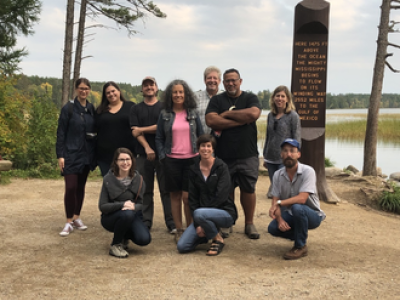
Participating in the GRC project impacted my career trajectory in a number of ways, especially in my teaching and continued research. Coming into my position as an assistant professor in English at Marquette University, I continued working on the “Indigenous Art and Activism Along the Mississippi River in Changing Climates,” and I developed one of my first courses at Marquette based on the research we had done and the website, Indigenous Mississippi, that we were in the process of creating. I developed the course, “Water is Life: Indigenous Art and Activism in Changing Climates,” to share our project and its artists’ and activists’ work with undergraduate students. The course allows me both highlight visual and material artists alongside literary artists who are articulating on-going Indigenous relationships with water, place, and environment.
“Our research and our website has generated a continued conversation in the classroom, where my students benefit from the work of my colleagues on the project and an expanding number of Indigenous artists.”
Dr. Samantha Majhor
As we begin to look back on the extraordinary 2016 protests against the Dakota Access Pipeline, which was a galvanizing event for the our GRC project, it’s more important than ever that undergraduate students see the links between the long history of environmental depredation that has long been part and parcel of settler-colonialism and the current calls, in large part coming from their own generation, for attending to environmental justice.
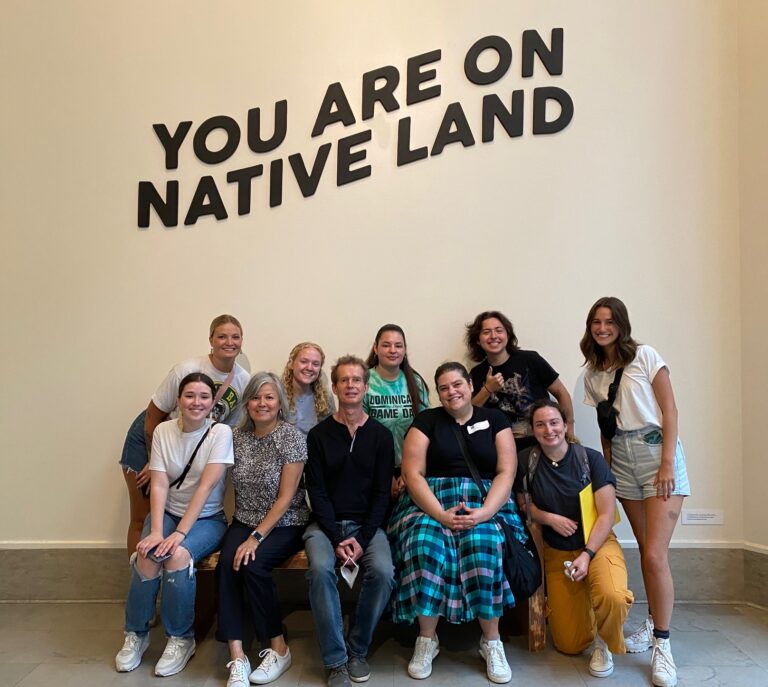
Not only has the project impacted the focus of my teaching, but it has greatly impacted the methodology of my current research projects. With the work and leadership of Dr. Jacqueline Schram (Ojibwe, Sankeeng Nation) and Dr. John Su and with grant funding from the Joerres Family Fund, I’ve been part of building Marquette’s Indigeneity Lab, a site for funding undergraduate research on Native American project topics. Largely undertaken during the summer months, the research work has expanded to include graduate researchers. We focus on building a community of scholars from underrepresented populations—who may be working on different projects—but come together as a collective. They support each other and share their work beyond the summer research. Like the GRC project, the Indigeneity Lab cultivates Native American and Indigenous research methodologies, whether we are working in library archives, developing digital maps and resources, or testing Milwaukee river waters for restoring wild rice.
The research and development of materials, coursework, and scholarship that came out of the GRC has substantially impacted my career. However, it is the relationships between our cohort that has proved most valuable to me over these first years as a junior scholar. In Summer 2022, I co-taught the Newberry Library’s NCAIS Summer Institute alongside Dr. Kelly Wisecup, who proposed and led our GRC project. Our graduate course for NCAIS was yet another iteration of our project, and Dr. Wisecup continues to be a significant mentor and colleague whose generosity shapes my scholarship. I could name countless ways in which the continued sense of camaraderie and scholarly community radiates from working with everyone involved in the GRC project.
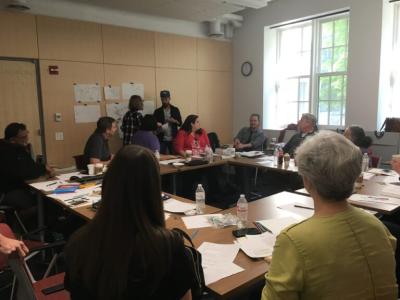
In January 2023, I once again teamed up with one of my mentors from the GRC project. Chris Pexa (Spirit Lake Dakota) and I were awarded a grant from the Mellon Foundation to support “Remapping the Očheti Šakowin Oyáte: Orature as Deep Mapping” project. Drawing on NAIS methodologies, we’ve envisioned the development of a digital storymap, an archive of stories connected to place, that is developed and held by Očheti Šakowin (Dakota, Nakota, Lakota) nations. We are partnering with community members from 16 tribal nations and beyond in order to build the archive, as well as with graduate and undergraduate researchers for a distinctly collaborative, Native-community-guided project. I remain connected to and indebted to my mentors and collaborators who worked on the GRC project and anticipate many more collaborations through the years.
Tell us about your work with the Indigeneity Lab at Marquette University. What projects are you involved in, both on-campus and in the community?
It has been most exciting to come to Marquette University and join a team in creating the Indigeneity Lab, the site of a growing number of undergraduate-led research projects on topics that center Native American history, culture and contemporary concerns. While our projects germinate on campus, each of our three main projects work in connection with the local Milwaukee Native community and Native Nations beyond the city. I have mentored undergraduate and graduate students’ work on the Native American Boarding Schools in Context project, a website that seeks to contextualize Marquette University’s archival holdings of the Bureau of Catholic Indian Mission records. Our site, soon to be updated with selected samplings from the archive, serves as an introduction to the types of documents one might find in the extensive BCIM archives. We also hope to give a primer on Native American Boarding School history and provide links and resources to the scholarship, investigations, and reports pertaining to over 100 years of forced assimilation and genocide through a boarding school education system.
I have also consulted and mentored undergraduate students work on our Wild Rice revitalization project, which is spearheaded by Marquette’s Dr. Michael Schlappi, professor of biological sciences. The Wild Rice project asks whether environmental cleanup efforts in Milwaukee rivers have created conditions clean enough to bring wild rice, an Indigenous plant and food species, back to the area. For many Native Nations who have connections to the western Great Lakes from time immemorial, wild rice is not just a staple food—but an important plant connected to story, ceremony and spiritual and intellectual life. The wild aquatic grass is a bellwether plant when it comes to healthy water systems and has been greatly impacted by both industry and, now, climate change. Marquette students have been testing wild rice varieties to see if they can grow and thrive in Milwaukee rivers at current conditions and learning about all the challenges and possibilities for restoring this important plant relative to waters in which it once thrived.
I am also so excited about the Indigenize Milwaukee mapping project, headed by Dr. Brian Rindfleisch in history at Marquette. Dr. Reinfleisch had long envisioned creating a digital map that highlighted Milwaukee as an Indigenous place, connecting sites of historical importance to Native Milwaukee’s contemporary sites of note. Recently, the project has expanded to include an app and walking tour.
Once again, the Indigeneity projects each develop out of Native American and Indigenous Studies research methods, they center collaboration, and they provide community-oriented materials. For me, the foundations of these collaborative research practices were first made manifest in my participation on the “Indigenous Art and Activism Along the Mississippi River in Changing Climates” project.
